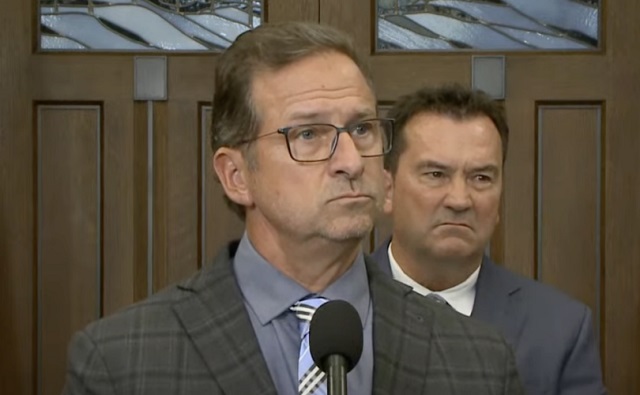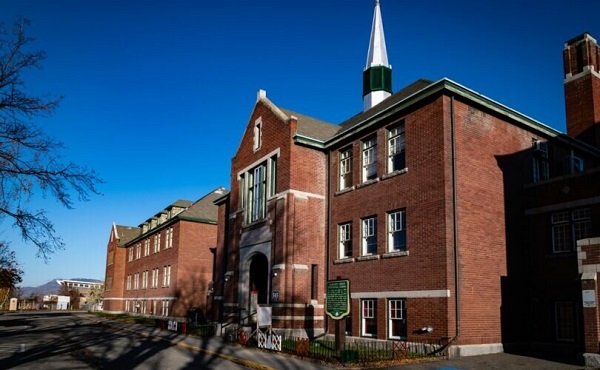National
Rumored deal with Bloc Quebec party could keep Trudeau Liberals in power, stave off election

From LifeSiteNews
“The federal government does not have a mandate to bargain with Quebec separatists at the expense of Alberta, the West and the rest of the country”
The possibility of an early Canadian election may not come to fruition after Bloc Québécois leader Yves-Francois Blanchet hinted that an alliance between the separatist party and the Liberals under Justin Trudeau could become a reality.
Rumors began to swirl that a Bloc-Liberal deal could happen after Bloc House leader Alain Therrien said Sunday that the party’s “objectives remain the same, but the means to get there will be much easier.”
“We will negotiate and seek gains for Quebec … our balance of power has improved, that’s for sure,” he said, as reported by the Canadian Press.
Therrien made the comments in light of the possibility of a federal election taking place before fall 2025 after New Democratic Party leader Jagmeet Singh pulled his official support for Trudeau’s Liberals last week.
Late last month, Conservative Party leader Pierre Poilievre called on Singh to pull his support for Trudeau’s Liberals so that an election could be held.
Therrien also noted that the NDP pulling its support of the Trudeau Liberals has created a “window of opportunity” that his party may exploit. The Canadian Press reported that a person close to the Bloc party said directly that the NDP had in essence handed the party the balance of power.
As it stands now, the Bloc has 32 seats to the NDP’s 24, which is more than enough to prop up the Liberals, who have 154 seats.
As for Blanchet, he told the media on Monday that he was feeling “good” about his party’s newfound power. He then took a shot at Poilievre, saying he is more or less like Trudeau. “There are plenty of issues on which (Poilievre’s) in the same position as Justin Trudeau,” Blanchet said.
“Show us that you’re different, Justin Trudeau, apart from being against abortion, then we’ll see what you have to offer,” he said.
“If the Liberals don’t get into the frame of mind to let us make some very clear gains for Quebec, they’d better pump up the tires on their election truck right away.”
While most Conservative MPs are pro-life, Poilievre supports abortion and has a poor track record when it comes to life and family issues, with Campaign Life Coalition having given him a “red light” rating.
News of a possible Bloc-Liberal deal to keep Trudeau in power drew the immediate ire of Alberta Premier Danielle Smith.
“The federal government does not have a mandate to bargain with Quebec separatists at the expense of Alberta, the West and the rest of the country,” she wrote Monday on X. “If the Liberals go down this path, we need an election to be called immediately.”
On Tuesday, Blanchet responded to Smith’s comments to reporters by saying he found her remarks “funny,” adding that “Canadians are suddenly very interested in us.”
As for Trudeau, his woes continue to mount. LifeSiteNews recently reported how national elections campaign director for Canada’s federal Liberal Party announced he was stepping down because, according to sources close to the party, he does not think Trudeau can win a fourth consecutive election.
Recent polls show that the Conservatives under Poilievre would win a majority government in a landslide in an election held today. Singh’s NDP and Trudeau’s Liberals would lose a massive number of seats.
Business
B.C. premier wants a private pipeline—here’s how you make that happen

From the Fraser Institute
By Julio Mejía and Elmira Aliakbari
At the federal level, the Carney government should scrap several Trudeau-era policies including Bill C-69 (which introduced vague criteria into energy project assessments including the effects on the “intersection of sex and gender with other identity factors”)
The Eby government has left the door (slightly) open to Alberta’s proposed pipeline to the British Columbia’s northern coast. Premier David Eby said he isn’t opposed to a new pipeline that would expand access to Asian markets—but he does not want government to pay for it. That’s a fair condition. But to attract private investment for pipelines and other projects, both the Eby government and the Carney government must reform the regulatory environment.
First, some background.
Trump’s tariffs against Canadian products underscore the risks of heavily relying on the United States as the primary destination for our oil and gas—Canada’s main exports. In 2024, nearly 96 per cent of oil exports and virtually all natural gas exports went to our southern neighbour. Clearly, Canada must diversify our energy export markets. Expanded pipelines to transport oil and gas, mostly produced in the Prairies, to coastal terminals would allow Canada’s energy sector to find new customers in Asia and Europe and become less reliant on the U.S. In fact, following the completion of the Trans Mountain Pipeline expansion between Alberta and B.C. in May 2024, exports to non-U.S. destinations increased by almost 60 per cent.
However, Canada’s uncompetitive regulatory environment continues to create uncertainty and deter investment in the energy sector. According to a 2023 survey of oil and gas investors, 68 per cent of respondents said uncertainty over environmental regulations deters investment in Canada compared to only 41 per cent of respondents for the U.S. And 59 per cent said the cost of regulatory compliance deters investment compared to 42 per cent in the U.S.
When looking at B.C. specifically, investor perceptions are even worse. Nearly 93 per cent of respondents for the province said uncertainty over environmental regulations deters investment while 92 per cent of respondents said uncertainty over protected lands deters investment. Among all Canadian jurisdictions included in the survey, investors said B.C. has the greatest barriers to investment.
How can policymakers help make B.C. more attractive to investment?
At the federal level, the Carney government should scrap several Trudeau-era policies including Bill C-69 (which introduced vague criteria into energy project assessments including the effects on the “intersection of sex and gender with other identity factors”), Bill C-48 (which effectively banned large oil tankers off B.C.’s northern coast, limiting access to Asian markets), and the proposed cap on greenhouse gas (GHG) emissions in the oil and gas sector (which will likely lead to a reduction in oil and gas production, decreasing the need for new infrastructure and, in turn, deterring investment in the energy sector).
At the provincial level, the Eby government should abandon its latest GHG reduction targets, which discourage investment in the energy sector. Indeed, in 2023 provincial regulators rejected a proposal from FortisBC, the province’s main natural gas provider, because it did not align with the Eby government’s emission-reduction targets.
Premier Eby is right—private investment should develop energy infrastructure. But to attract that investment, the province must have clear, predictable and competitive regulations, which balance environmental protection with the need for investment, jobs and widespread prosperity. To make B.C. and Canada a more appealing destination for investment, both federal and provincial governments must remove the regulatory barriers that keep capital away.
Business
Carney’s new agenda faces old Canadian problems

From the Fraser Institute
In his June speech announcing a major buildup of Canada’s military, Prime Minister Mark Carney repeated his belief that this country faces a “hinge moment” of the sort the allied countries confronted after the Second World War.
A better comparison might be with the beginning of the war itself.
Then, the Allies found themselves at war with an autocratic state bent on their defeat and possible destruction. Now, Carney faces an antagonistic American president bent on annexing Canada through economic warfare.
Then, Canada rose to the challenge, creating the world’s third-largest navy and landing an army at Normandy on D-Day. Now, Carney has announced the most aggressive reorienting of Canada’s economic, foreign and defence policies in generations.
Polls show strong support among Canadians for this new agenda. But the old Canada is still there. It will fight back. It may yet win.
The situation certainly would have been more encouraging had Carney not inherited Justin Trudeau’s legacy of severe economic and environmental restrictions—picking economic winners and losers rather than letting the market decide—and chronic deficits. The new prime minister would do well to dismantle as much of that legacy as he can.
Some advocate a return to the more laissez-faire approach of Stephen Harper’s government. But Harper didn’t confront a belligerent president hoping to annex Canada through the “economic force” of tariff walls.
The prime minister succeeded in getting Bill C-5, which is intended to weaken at least some of the restrictions on resource development and infrastructure, passed into law. He and the premiers pledge to finally dismantle generations of internal trade and labour mobility barriers. If we must trade less with the Americans, we can at least learn to trade with ourselves.
And the prime minister deserves high praise for reversing decades of military decline through increased spending and efforts to improve procurement. If Carney accomplishes nothing more than restoring Canada’s defences, especially in the Arctic, he will be well remembered.
That said, major challenges confront the Carney agenda.
There’s much talk about a new national energy corridor. But what does that mean? One KPMG executive defined it as a “dedicated, streamlined pathway for the energy, electricity, decarbonization, transportation and digital infrastructure.”
Yes, but what does that mean?
Whatever it means, some First Nations will oppose it tooth-and-nail. Not all of them, mind you. The First Nations Major Project Coalition is dedicated to assisting First Nations in working with government and the private sector for the benefit of all. But many First Nations people consider resource development further exploitation of their ancestral lands by a colonizing power. At the first major proposal to which they do not buy in, they will take the government to court.
What investor will be willing to commit to a project that could be blocked for years as First Nations and Ottawa fight it out all the way to the Supreme Court?
The prime minister, formerly a fervent advocate of combatting climate change, now talks about developing “conventional energy,” which means oil and gas pipelines. But environmental activists will fiercely oppose those pipelines.
There is so much that could go wrong. Sweep away those internal trade barriers? Some premiers will resist. Accelerate housing development? Some mayors will resist. Expand exports to Europe and Asia? Some businesses and entrepreneurs will say it’s not worth the risk.
As for the massive increase in defence spending, where will the money come from? What will be next year’s deficit? What will be the deficit’s impact on inflation, interest rates and sovereign creditworthiness? The obstacles are high enough to make anyone wonder how much, if any, of the government’s platform will be realized. But other factors are at work as well, factors that were also present in 1939.
To execute his mandate, Carney is surrounding himself with what, back in the Second World War, were called “dollar a year men”—executives who came to Ottawa from the private sector to mobilize the economy for wartime.
In Carney’s case he has brought in Marc-André Blanchard as chief of staff and Michael Sabia as clerk of the privy council. Both are highly experienced in government and the private sector. Both are taking very large pay cuts because, presumably, they understand the gravity of the times and believe in the prime minister’s plans.
Most important, Carney’s agenda has broad support from a public that fears for the country’s future and will have little patience toward any group seeking to block the prime minister’s agenda.
Millions of Canadians want this government’s reform efforts to succeed. Those who would put it at risk of failing will have to contend with public anger. That gives Carney a shot at making real change.
-

 COVID-192 hours ago
COVID-192 hours agoFDA requires new warning on mRNA COVID shots due to heart damage in young men
-

 Indigenous1 hour ago
Indigenous1 hour agoInternal emails show Canadian gov’t doubted ‘mass graves’ narrative but went along with it
-

 Business14 mins ago
Business14 mins agoCarney’s new agenda faces old Canadian problems
-

 Bruce Dowbiggin3 hours ago
Bruce Dowbiggin3 hours agoEau Canada! Join Us In An Inclusive New National Anthem
-

 Also Interesting2 days ago
Also Interesting2 days ago9 Things You Should Know About PK/PD in Drug Research
-

 Business2 days ago
Business2 days agoCannabis Legalization Is Starting to Look Like a Really Dumb Idea
-

 Bruce Dowbiggin2 days ago
Bruce Dowbiggin2 days agoThe Covid 19 Disaster: When Do We Get The Apologies?
-

 Media2 days ago
Media2 days agoCBC journalist quits, accuses outlet of anti-Conservative bias and censorship






